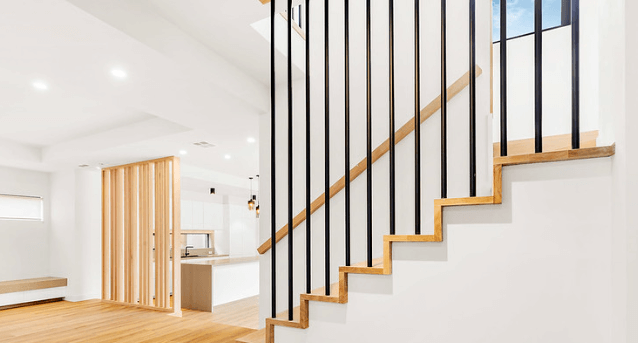How Do Stair Balustrades Enhance Spatial Perception and Safety in Interior Design?

Stair balustrades play a crucial role in interior design by not only providing structural support but also enhancing spatial perception and safety. Utilizing materials with transparent properties, such as tempered glass or acrylic panels, creates a visually open environment, allowing for unobstructed views of adjacent spaces. Moreover, incorporating minimalist designs with slender profiles or open frameworks contributes to a sense of spaciousness, particularly in confined areas.
Additionally, strategically placed handrails and balusters ensure safety by providing stability and guidance for users, while adhering to building codes and regulations. By integrating these design techniques, stair balustrades become integral elements that optimize both the aesthetic and functional aspects of interior spaces.
What Innovative Materials and Technologies Are Revolutionizing Stair Balustrade Designs?
Recent advancements in materials and technologies are revolutionizing stair balustrade designs, opening up new avenues for creativity and functionality. For example, the integration of lightweight yet durable materials like carbon fiber or aluminum alloys allows for the creation of intricate designs with enhanced structural integrity. Furthermore, the advent of 3D printing technology enables the fabrication of custom-designed balustrade components, offering unparalleled flexibility in design customization.
Additionally, the incorporation of smart features, such as motion sensors or integrated lighting systems, enhances both the usability and aesthetic appeal of stair balustrades. By harnessing these innovative materials and technologies, designers can push the boundaries of traditional design norms, creating stair balustrades that are not only visually stunning but also highly functional and technologically advanced.
How Can Stair Balustrade Designs Embrace Sustainability and Eco-Friendly Practices?
What sustainable design strategies can be implemented in stair balustrade designs to promote environmental responsibility and minimize ecological footprint?
Answer: Embracing sustainability in stair balustrade designs involves incorporating eco-friendly materials, adopting energy-efficient practices, and promoting longevity and recyclability. For instance, utilizing sustainably sourced wood or bamboo for handrails and baluster components reduces reliance on finite resources and minimizes carbon footprint. Additionally, opting for finishes and coatings with low volatile organic compound (VOC) content ensures indoor air quality and reduces harmful emissions during manufacturing and installation.
Moreover, designing modular balustrade systems that allow for easy disassembly and reconfiguration promotes reusability and reduces waste generation. By integrating these sustainable design strategies, stair balustrade designs not only contribute to environmental conservation but also inspire a culture of responsible consumption and design innovation. Choose Balconette for exceptional stair balustrade designs. Call at 01342 410411.



